Interview: Leading a teenager to adulthood
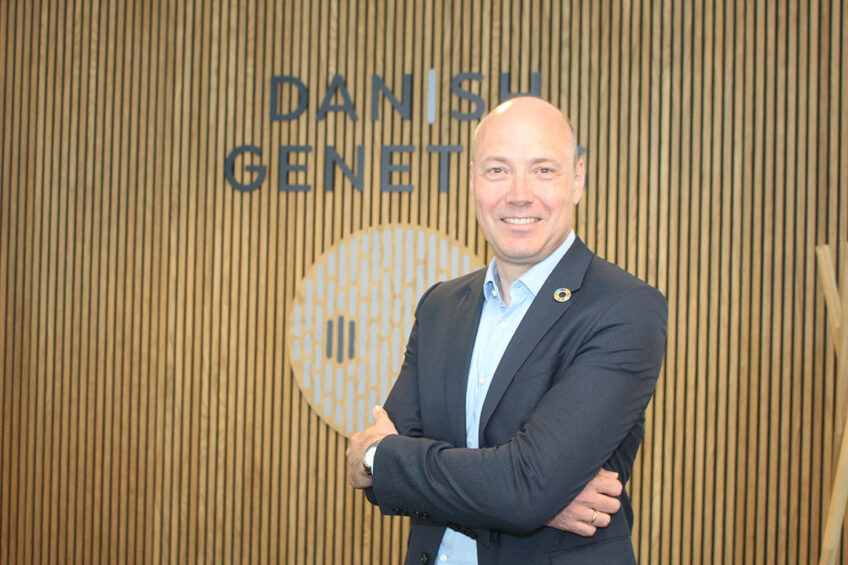
In February 2022, Henrik Biilmann took up the reins at the relatively new pig genetics brand Danish Genetics. With a background in marketing and sales, he is now at the helm of an organisation of 25 breeders, multipliers and vendors. Communicating well is a must.
It has been a few years now since the strong Danish pig breeding sector surprised the world as various breeders chose to step out of the national breeding programme and go their own way. Apart from DanBred, the new company Danish Genetics was created – an organisation of 25 partners consisting of multiplier specialists, breeders or vendors. Building on years of pig genetics experience, the new organisation had to build a new future. From 1 February, that task has fallen on the shoulders of Henrik Biilmann, who was in charge of cattle genetics company Viking Genetics prior to joining this young pig genetics company.
What has been your experience so far?
“Danish Genetics is still in the phase of growing, becoming a teenager, as I would call it. We àre not an infant, because we have learned to crawl and to walk already. But as a company we are still in steep development in terms of the ambitions we have. And to fulfil those visions we still have some steps to take.
“More generally speaking, pig genetics is an exciting area, where a lot of developments are going on and a lot more will come in the future, not only for us as an individual business, but also for the business as a whole.”
The farmers are the ones who own the animals and do the actual breeding with our guidance, and we then select the best animals in their herds to go into further breeding
How does Danish Genetics work with its vendors, breeders and multipliers?
“We are a small company, but collectively with our partners we still consider ourselves to be of a considerable size. We are owned by 25 partners, all of which are breeders, multipliers or vendors. They own various shares, depending on the size of the herd when Danish Genetics was founded. They own us – and what they own is a company that drives the breeding programme.
“We ensure everything around that, from data collection, to handling of those data, to collecting them into a database and finally also being able to publish an index per breeding animal. The farmers are the ones who own the animals and do the actual breeding with our guidance, and we then select the best animals in their herds to go into further breeding, taking into consideration the directions that we want our breeding programme to have, inbreeding and other elements. All the partners are allowed to sell Danish Genetics genes: semen and animals.”
Technically speaking, Danish Genetics doesn’t sell genetics itself?
“We do not sell, our partners do. When they sell, they provide us with a royalty to cover our costs in developing the breeding programme. And they then sell to markets around the world. Not all of them are selling, that is why we also have the vendors – their core business is to sell and take care of all the logistics, whether it is by plane or truck.”
And nucleus farms are owned by farmer X, Y or Z, part of Danish Genetics.
“Correct. There are 8 nucleus farms. All 8 are partners.”
You joined Danish Genetics at a time when the break from DanBred is a few years behind us. Have things calmed down?
“Luckily, I have not been involved in any conflict, which is probably good. Now we are just ordinary competitors, like we are competitors to any other pig genetic producer or developer, whether it’s PIC or Choice, etc. We as a company moved on. And I think DanBred has done the same.”
That link, that breeders are actually also our sales force, is a strength to us
Both organisations sell high-quality Danish genetics. How is your organisation different?
“I have had the same question. In our core are genes from Denmark. Some of our partners have been breeders for generations, with years of experience in breeding pigs, passed on from father to son or mother to daughter. I guess that is a commonality between us and DanBred.
“We are different in the sense that we are small and hopefully more agile. There is a closer link between our nucleus farms and our customers. And there is a closer link from the breeders, whether it is nucleus farms, or multiplication farms, to us, to the core of the breeding programme. We have an ambition to have a very close dialogue with the partners that are both in the breeders and our sales force. That link, that breeders are actually also our sales force, is a strength to us.”
So, it is not so much the genetics itself, but more the kind of services that you offer?
“I think we would like to claim that on top of the genetics itself our partners provide a world-class service as well.”
Tell us about Danish Genetics’ breeding goals currently: What are you focusing on?
“I think there is a common denominator around sustainability, broadly speaking. So, we have a breeding goal around ‘saved feed’. But it is not only conversion of feed to kilos. We are actually trying to breed smarter and breed for better meat.
“Piglet survival, as another example, is also important. It is important because of the finance to the farmers. Where we try to be different is that we actually measure piglet survival not only on day 5, but actually also later, on day 21, and have that as a data point in our breeding programme as well. So we are breeding, again with sustainability as a headline, for more robust pigs.”
You mentioned that Danish Genetics has now learned to crawl and to walk. Where do you see your company in ten years from now?
“I honestly think that it was quite impressive to move from scratch to where we are today in such a short period. Definitely the ambition is to continue on that path and maybe even to speed it up and to grow even more.
“If we try to compare ourselves to PIC, to DanBred, etc. in terms of revenue, we think we are somewhere in the top 5, top 7 in the world. And we want to get higher on that list.”
If only for reasons of self-protection. In the world of poultry genetics, there is heavy consolidation in the market. Could pigs also go in the same direction?
“That is a logical conclusion. It is an industry where the requirement to invest in research and development is high. It takes a certain size to be able to do that. That is something that we all acknowledge and understand.”
We did see potential and we did have sales in Russia before we decided to stop any new deliveries
Danish Genetics pulled out of Russia in the context of the war in Ukraine. Did you have a lot of business there?
“Not a lot, but we did see and expected large growth there. We were not in a situation where we had employees in Russia. So, we did not have dilemmas as large as some other Western companies that had many employees and larger operations or factories in Russia. In that respect, I felt lucky.
“On the other hand, of course, it was still a tough decision to make because we did see a market there, we did see potential and we did have sales in Russia before we decided to stop any new deliveries. But we had to consider: what is expected of us?”
Would you go back to Russia if the war stopped?
“We are saying that this is what we do for now. But whether ‘for now’ will last 5 months, 5 years or 15 years, who knows at this point? We are definitely not saying: ‘never ever Russia’. However, things must change before we see ourselves delivering new animals and new semen to that area.”
Looking ahead to 2050: Will it be possible to feed 9.2 billion people?
“We must hope so. If you look back in history we have managed so far. There is some trust in our species as human beings, that we somehow have solved the challenges in the thousands(?) of years that we have been here. Of course, it is a challenge because we not only have to feed this many people, but we also need to have a planet to live on at the same time. And that is probably the challenge. But yes, I am positive it can be done.
“Coming back to the Ukraine crisis, suddenly everybody agrees that we need to move away from fossil fuels much faster than we have seen before. My impression is that it is much easier to get an agreement on high investments in green energy now than earlier. I think there will be a lot more things happening in this area in the coming ten years than we have seen in the last ten years. And the same goes for food production and balancing food production with sustainability at the same time. Because I think that is a prerequisite – that it is balanced.”
What do you consider to be your biggest challenge on the new job?
“Understand the genetics! Because it is a challenge when you put sales and marketing people in charge of a breeding programme. Then, clearly, when we say we have an advantage of being agile and having departments close to us, there is also a challenge in managing departments. I also need to manage upwards. The partners are my bosses, but they also need to be led somehow. Luckily, I also have some experience in that respect from Friland and from Viking Genetics. I’ve done that for the past 8 to 9 years at least.
“I have been visiting all 25 partners at their farms, or offices if they were vendors. I made that a high priority. A large proportion of my introduction has been to be out of the office and talking to the partners, understanding their individual expectations of me. I asked questions like when they would consider me to be a success. Also, what they feared that I might do as a newcomer to this industry.”
And? What did they fear?
“One thing they fear is that I am now the fourth CEO in 4 years, so they are hoping that I stay for longer than the previous ones.”
 Beheer
Beheer
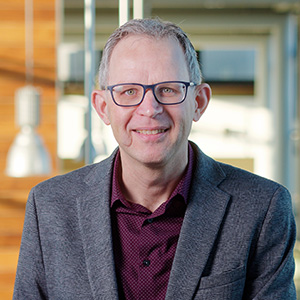
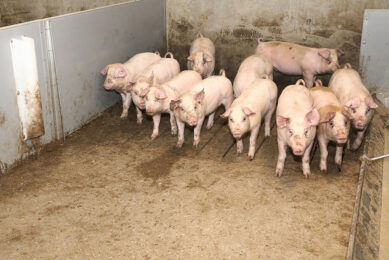

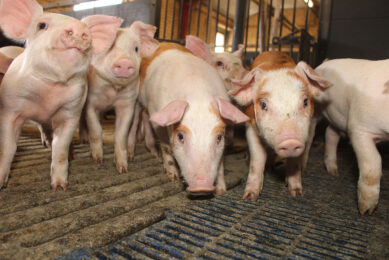
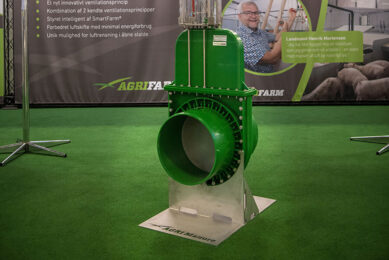



 WP Admin
WP Admin  Bewerk bericht
Bewerk bericht